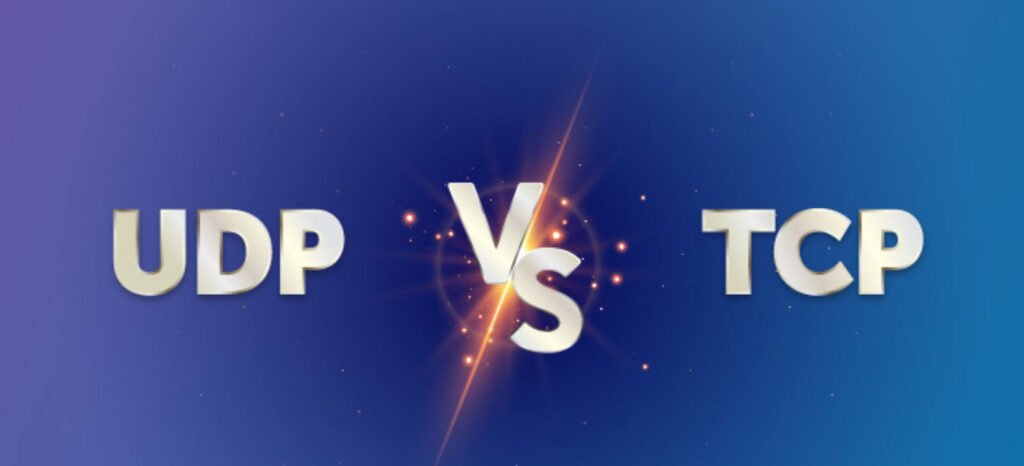
In the intricate web of computer networks, communication between devices is facilitated by a variety of protocols, each designed for specific tasks. Two fundamental transport layer protocols, Transmission Control Protocol (TCP) and User Datagram Protocol (UDP), play crucial roles in this digital symphony.
This article sheds light on the protocols associated with TCP and UDP, emphasizing the significance of their respective roles in fostering seamless communication across the internet.
TCP-based Protocols
1. File Transfer Protocol (FTP):
FTP, a venerable protocol for file exchange, relies on TCP for its operations. It utilizes TCP port 20 for data transfer and TCP port 21 for control, ensuring a reliable and orderly exchange of files between devices.
2. Telnet:
Telnet, a remote terminal access protocol, operates over TCP port 23. This protocol allows users to log into remote computers, execute commands, and manage resources as if they were physically present at the machine.
3. Simple Mail Transfer Protocol (SMTP):
SMTP, the engine behind email delivery, leverages TCP on port 25. It provides a standardized method for sending and receiving emails across networks, ensuring the reliable transmission of electronic messages.
4. Hypertext Transfer Protocol (HTTP):
HTTP, the foundation of data communication on the World Wide Web, utilizes TCP port 80. It enables the transfer of hypertext, allowing users to access and navigate web pages seamlessly.
UDP-based Protocols
1. Simple Network Management Protocol (SNMP):
SNMP, a protocol for managing and monitoring network devices, relies on UDP for its operations. It uses UDP ports 161 and 162, facilitating efficient communication between network management systems and the devices they oversee.
2. Domain Name System (DNS):
DNS, the backbone of the internet’s naming system, operates over UDP port 53. It translates human-readable domain names into IP addresses, enabling users to access websites using familiar names instead of numerical IP addresses.
3. Trivial File Transfer Protocol (TFTP):
TFTP, a simplified version of FTP, employs UDP port 69 for its file transfer operations. While lacking some features of its TCP-based counterpart, TFTP is efficient for certain applications due to its simplicity and reduced overhead.
4. Dynamic Host Configuration Protocol (DHCP):
Both DHCP server and client operations utilize UDP for their communication. The DHCP server communicates on UDP port 67, offering dynamic IP addresses to devices, while the client communicates on UDP port 68 to request and obtain IP configuration from the server.
5. Remote Procedure Call (RPC):
RPC, a protocol facilitating communication between programs on different computers, operates over UDP port 111. It enables the execution of procedures on a remote server, contributing to the seamless interaction between distributed systems.
Conclusion
Understanding the protocols associated with TCP and UDP is crucial for network administrators, system architects, and anyone involved in the management of computer networks. Whether it’s ensuring reliable file transfers, remote access, email communication, or efficient web browsing, the choice of TCP or UDP reflects the specific requirements of each protocol.
By comprehending the nuances of these protocols and their associated ports, individuals can navigate the complexities of the digital realm, optimizing network performance and fostering secure and efficient communication across the internet.
You may also like:- How To Fix the Crowdstrike/BSOD Issue in Microsoft Windows
- MICROSOFT is Down Worldwide – Read Full Story
- Windows Showing Blue Screen Of Death Error? Here’s How You Can Fix It
- A Guide to SQL Operations: Selecting, Inserting, Updating, Deleting, Grouping, Ordering, Joining, and Using UNION
- Top 10 Most Common Software Vulnerabilities
- Essential Log Types for Effective SIEM Deployment
- How to Fix the VMware Workstation Error: “Unable to open kernel device ‘.\VMCIDev\VMX'”
- Top 3 Process Monitoring Tools for Malware Analysis
- CVE-2024-6387 – Critical OpenSSH Unauthenticated RCE Flaw ‘regreSSHion’ Exposes Millions of Linux Systems
- 22 Most Widely Used Testing Tools









This Post Has One Comment